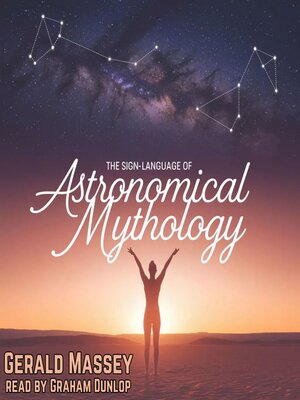The Sign-Language of Astronomical Mythology
audiobook (Unabridged) ∣ Ancient Egypt the Light of the World Books 5 and 6
By Gerald Massey

Sign up to save your library
With an OverDrive account, you can save your favorite libraries for at-a-glance information about availability. Find out more about OverDrive accounts.
Find this title in Libby, the library reading app by OverDrive.



Search for a digital library with this title
Title found at these libraries:
| Library Name | Distance |
|---|---|
| Loading... |
The origin of a saviour in the guise of a little child is traceable to Child-Horus, who brought new life to Egypt every year as the Messu of the inundation. This was Horus in his pre-solar and pre-human characters of the fish, the shoot of the papyrus, or the branch of the endless years. In a later stage the image of Horus on his papyrus represented the young god as solar cause in creation. But in the primitive phase it was a soul of life or of food ascending from the water in vegetation, as he who climbs the stalk, ranging from Child-Horus to the Polynesian hero, and to Jack ascending heavenward by means of his bean-stalk. –from "The Sign Language of Astronomical Mythology" It goes unappreciated by modern Egyptologists, but it is embraced by those who savor the concept of a "hidden history" of humanity, and those who approach all human knowledge from the perspective of the esoteric. Gerard Massey's massive Ancient Egypt: The Light of the World–first published in 1907 and the crowning achievement of the self-taught scholar–redefines the roots of Christianity via Egypt, proposing that Egyptian mythology was the basis for Jewish and Christian beliefs.







